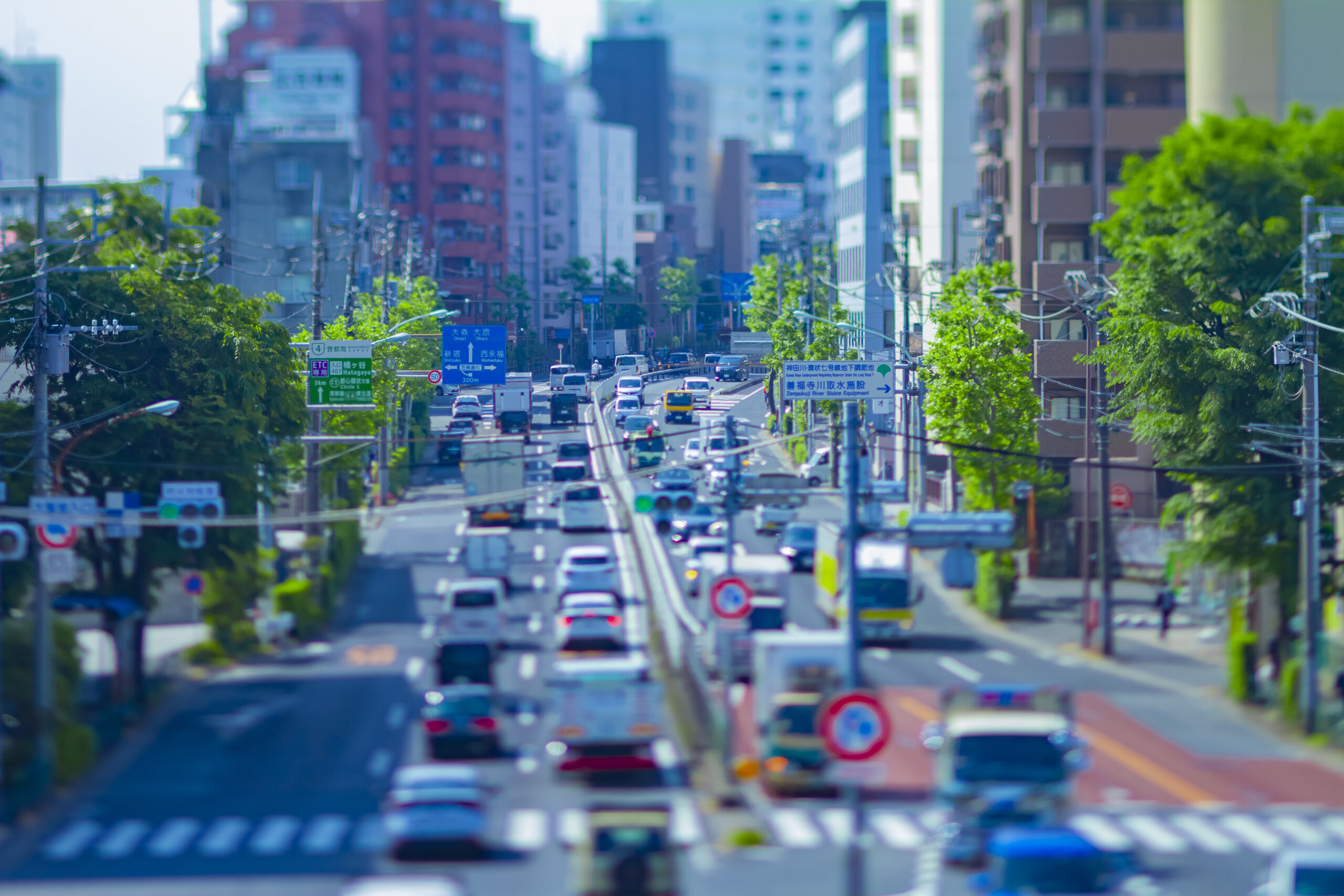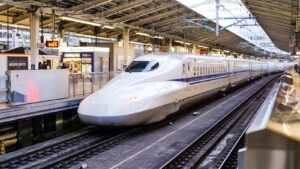In a nation where precision and efficiency are woven into the fabric of society, Japan’s traffic system stands as a testament to these values. From the bullet trains that puncture the landscape with their sleek profiles and breathtaking speeds to the bustling subways of Tokyo, Japan has meticulously crafted a transportation network that is both sophisticated and remarkably user-friendly. This exploration dives into the various facets of Japan’s traffic system, shedding light on how this intricate web of mobility solutions not only moves millions daily but also reflects the country’s innovative spirit and commitment to sustainability.
Navigating Japan’s High-Speed Rail Network
Japan’s high-speed rail network, epitomized by the iconic Shinkansen or bullet train, is a marvel of modern engineering and operational excellence. Spanning the length and breadth of the country, it connects major cities with unparalleled speed and precision, turning what would be long-haul journeys into manageable commutes. The efficiency of the Shinkansen is underscored by its punctuality, with delays measured in mere seconds. This network is not just a model of technical prowess but also an emblem of Japan’s post-war resurgence and economic dynamism. Integral to its success is a relentless focus on safety and technology, including earthquake early-warning systems that can bring trains to a halt within seconds of detecting a tremor. As it continues to evolve, the network is expanding to cover new regions, further knitting the nation together while reducing travel times dramatically.
Tokyo’s Bustling Subway: A Closer Look
Tokyo’s subway system is a labyrinthine network that serves as the lifeline of the world’s most populous metropolitan area. With millions relying on it for their daily commute, it’s a symphony of seamless operation, where trains arrive and depart with clockwork regularity. The system’s complexity is matched by its user-friendliness, with multilingual signs and announcements guiding locals and tourists alike. Despite its vastness, the subway maintains an admirable cleanliness and order, a reflection of the broader societal respect for public spaces. It’s not just a mode of transport; it’s a cultural experience, offering a window into the rhythms of Tokyo life. The subway system also exemplifies Japan’s commitment to continuous improvement, with ongoing expansions and upgrades enhancing capacity and efficiency.
The Intricacies of Japan’s Bus Routes
Beyond the high-speed trains and subways, Japan’s bus network plays a critical role in knitting the urban and rural fabric of the country together. It offers a level of granularity in coverage that rail cannot, reaching into the nooks and crannies of Japan’s varied geography. The bus system, characterized by its timeliness and reliability, complements the rail network, providing the last mile of connectivity for many. For visitors, navigating this system can seem daunting, but it offers a closer look at Japan beyond the urban sprawl. Buses in Japan are not merely functional; they embody the same ethos of service and punctuality that pervades the country’s public transport system. Increasingly, these buses are also becoming eco-friendlier, with electric and hybrid models making their way into the fleet.
Cycling in Japan: A Growing Urban Trend
Cycling in Japan has transitioned from being a traditional mode of local transport to a significant element of urban mobility strategies. In cities like Tokyo and Osaka, the increasing number of dedicated cycling lanes underscores a growing recognition of bicycles as both an environmentally friendly and efficient urban transport option. Cycling in Japan is supported by a robust infrastructure, including extensive bike parking facilities and rental services, making it an accessible option for both residents and tourists. It’s not just about practicality; cycling also offers a unique perspective on the country, combining mobility with the opportunity to explore at a more human pace. As Japan continues to grapple with urban congestion and environmental challenges, cycling represents a sustainable path forward.
The Role of Taxis in Urban Japan
Taxis in Japan epitomize service excellence, offering a high level of convenience, especially in areas where public transport may not be as accessible. Known for their cleanliness and the professionalism of their drivers, Japanese taxis provide a reliable option for navigating the complex urban landscapes. This is particularly true in Tokyo, where taxis complement the extensive public transport network. Notably, Japan’s taxis are adapting to the digital age, with app-based hailing systems making them more accessible to a tech-savvy population and visitors. The taxis, while on the pricier side, reflect Japan’s broader emphasis on quality and customer satisfaction in its transportation services.
Japan’s Unique Approach to Traffic Management
Japan’s approach to traffic management is characterized by an innovative use of technology and a deep-seated cultural adherence to rules and order. This is evident in the widespread deployment of intelligent transportation systems (ITS), which leverage data analytics and cutting-edge technology to optimize traffic flow and enhance safety. From synchronized traffic lights to real-time traffic monitoring, these systems mitigate congestion and reduce the environmental impact of road traffic. Japan’s traffic management strategies also include extensive public education campaigns, fostering a shared sense of responsibility among road users. This holistic approach not only keeps Japan’s roads moving smoothly but also contributes to the overall efficiency of its transportation network.
Pedestrian-Friendly Cities: A Japanese Model
Japanese cities offer a blueprint for creating pedestrian-friendly urban spaces that prioritize safety and accessibility. With well-maintained sidewalks, ample pedestrian crossings, and strict traffic laws ensuring right-of-way, walking is not just safe but also a pleasant way of experiencing the urban environment. Many cities have implemented "pedestrian paradise" zones, where streets are closed to vehicle traffic during certain times, allowing pedestrians to roam freely. This emphasis on walkability reflects a broader understanding of public spaces as communal assets, vital to the social and economic vitality of urban centers. Japan’s pedestrian-oriented policies contribute significantly to the livability of its cities, creating environments where residents and visitors alike can enjoy the urban landscape at their own pace.
The Future of Electric Vehicles in Japan
Japan is at the forefront of the electric vehicle (EV) revolution, with significant investments in EV technology and infrastructure signaling a commitment to sustainable mobility. The country’s automakers are leading the charge, unveiling a slew of EV models designed to meet a wide range of needs and preferences. Alongside this, the expansion of charging infrastructure is making EV ownership more practical for the average consumer. The government is also playing a crucial role, offering incentives to both manufacturers and consumers to accelerate the transition to electric mobility. This push towards EVs is part of a broader strategy to reduce Japan’s carbon footprint and combat urban air pollution, aligning with global environmental goals.
The Impact of Tourism on Japan’s Transport
The influx of international tourists to Japan has had a profound impact on its transport system, prompting a wave of innovations and improvements. From the expansion of airport services and facilities to the introduction of multilingual support across public transportation networks, Japan is making strides in accommodating the growing number of visitors. Tourism has also spurred the development of passes and cards that offer unlimited travel on various modes of transport, making it easier and more economical for tourists to explore the country. This responsiveness to the needs of tourists not only enhances the visitor experience but also underscores Japan’s reputation for hospitality and meticulous attention to service.
Japan’s Investment in Infrastructure Efficiency
Japan’s commitment to infrastructure efficiency is evident in the continuous upgrading of its transport networks and the integration of technology to enhance operational performance. Significant investments in infrastructure, from airports and seaports to roads and railways, ensure that the backbone of Japan’s economic activity is robust and reliable. These investments are guided by a forward-looking approach that anticipates future needs and challenges, including population shifts and climate change. By prioritizing efficiency, Japan is not only improving the daily lives of its residents but also strengthening its position in the global economy, ensuring that it remains competitive and resilient in the face of evolving demands.
Innovations in Japan’s Public Transportation
Innovation is the hallmark of Japan’s approach to public transportation, with a focus on harnessing technology to improve convenience, efficiency, and sustainability. From pioneering high-speed rail technology to adopting smart ticketing systems that streamline passenger flow, Japan continually sets new benchmarks for public transport innovation. These advancements extend to bus and subway systems, where real-time tracking and mobile app integration offer passengers unprecedented control over their travel experience. Furthermore, Japan is exploring the potential of autonomous vehicles to revolutionize urban mobility, conducting trials in controlled environments. These innovations not only enhance the functionality of Japan’s transport system but also contribute to a culture of continuous improvement and technological ambition.
The Cultural Significance of Japan’s Trains
The train holds a special place in Japanese culture, symbolizing more than just a mode of transport. It represents the country’s technological advances, its commitment to punctuality, and a shared experience that transcends social and economic boundaries. The train has been immortalized in literature, film, and art, reflecting its integral role in daily life and the collective imagination of the nation. Seasonal train journeys, such as those to view cherry blossoms or autumn leaves, are cherished traditions that highlight the deep connection between the Japanese people and their landscape. Moreover, themed trains, including those dedicated to anime and historical figures, offer unique experiences that blend travel with entertainment and education, further enriching Japan’s cultural tapestry.
Japan’s traffic system is a microcosm of the country’s broader societal values and technological prowess. With its blend of efficiency, innovation, and a deep-rooted sense of communal responsibility, the system not only facilitates movement but also enriches the quality of life for those it serves. As Japan continues to navigate the challenges of urbanization, environmental sustainability, and changing demographic patterns, its approach to transportation offers valuable lessons for the world. In the seamless operation of its trains, the meticulous management of its roads, and the thoughtful integration of pedestrian spaces, Japan’s traffic system stands as a beacon of what is possible when a nation moves together towards a vision of harmonious, sustainable mobility.






